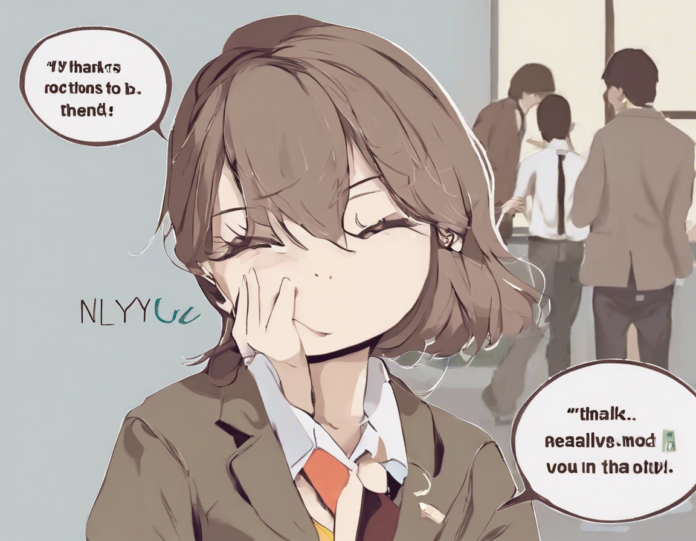Have you ever stopped to think about the meaning behind the phrase “thanks a lot”? At first glance, it may seem like a simple expression of gratitude, but upon closer examination, there are layers of nuance and complexity to this seemingly straightforward statement.
The Basics of Gratitude
Gratitude is a powerful emotion that plays a significant role in human interactions. Expressing thanks is a way to acknowledge the kindness, thoughtfulness, or support of others. It fosters positive relationships, strengthens bonds, and creates a sense of connection between individuals.
Breaking Down “Thanks A Lot”
- “Thanks”: This is a common expression of gratitude, often used in everyday interactions. It reflects appreciation for something that has been said or done.
- “A Lot”: This modifier intensifies the gratitude expressed in the statement. It conveys that the level of appreciation is high or significant.
Different Interpretations
While on the surface, “thanks a lot” may seem like a warm and sincere expression of gratitude, its interpretation can vary depending on the context, tone of voice, and body language accompanying the words.
- Sincere Gratitude: In some instances, “thanks a lot” is used genuinely to express heartfelt appreciation for a meaningful gesture or act of kindness.
- Sarcastic Undertones: However, in certain situations, the phrase can be laced with sarcasm or irony, implying the opposite of its literal meaning. Tone of voice and facial expressions are crucial in conveying this subtext.
- Casual Acknowledgment: In more informal settings, “thanks a lot” can be used as a quick way to say thank you without delving into a lengthy expression of gratitude.
Cultural Differences
Cultural norms and practices also influence the way gratitude is expressed and interpreted. In some cultures, effusive displays of thanks may be the norm, while in others, more understated acknowledgments are preferred. Understanding these cultural nuances is essential for effective communication and building rapport across diverse settings.
Etiquette and Social Conventions
Navigating the intricacies of expressing gratitude requires a nuanced understanding of social conventions and etiquette. Different contexts may call for varying degrees of formality or informality in how thanks are conveyed. Tailoring your expressions of gratitude to suit the situation is key to fostering positive relationships and avoiding misunderstandings.
Going Beyond Words
While saying “thanks a lot” is a good starting point, true gratitude goes beyond mere words. Taking action to show appreciation, extending kindness in return, or offering support when needed are all ways to deepen the sense of gratitude between individuals.
How to Enhance Your Expressions of Thanks
- Be Specific: Instead of a generic “thanks a lot,” try to be specific about what you are grateful for. For example, “I really appreciate your help with the project deadline.”
- Use Nonverbal Cues: Body language, facial expressions, and tone of voice can amplify the sincerity of your gratitude.
- Follow Up: A follow-up note, gesture, or small token of appreciation can leave a lasting impact and show that your thanks are genuine.
FAQs About Expressing Thanks
Q: Is saying “thanks a lot” the same as saying “thank you”?
A: While both phrases convey gratitude, “thanks a lot” tends to emphasize a higher degree of appreciation.
Q: How can I show my thanks beyond words?
A: Actions speak louder than words. Consider acts of kindness, gestures of support, or offering your assistance in return.
Q: When is it appropriate to use “thanks a lot” in conversation?
A: “Thanks a lot” is suitable for informal settings among peers or friends. In more formal situations, a more elaborate expression of gratitude may be preferred.
Q: Can “thanks a lot” be misinterpreted as sarcasm?
A: Yes, depending on the tone and context, “thanks a lot” can carry sarcastic undertones. Be mindful of how your words may be perceived.
Q: Are there cultural differences in how gratitude is expressed?
A: Yes, cultural norms play a significant role in shaping expressions of gratitude. Be attuned to cultural nuances when interacting with individuals from diverse backgrounds.
In Conclusion
“Thanks a lot” may be a common phrase, but its implications and nuances run deep. By understanding the layers of meaning behind expressions of gratitude, we can enrich our interactions, strengthen relationships, and foster a culture of appreciation in our personal and professional lives. So, the next time you utter those words, remember the depth of gratitude they can convey.


